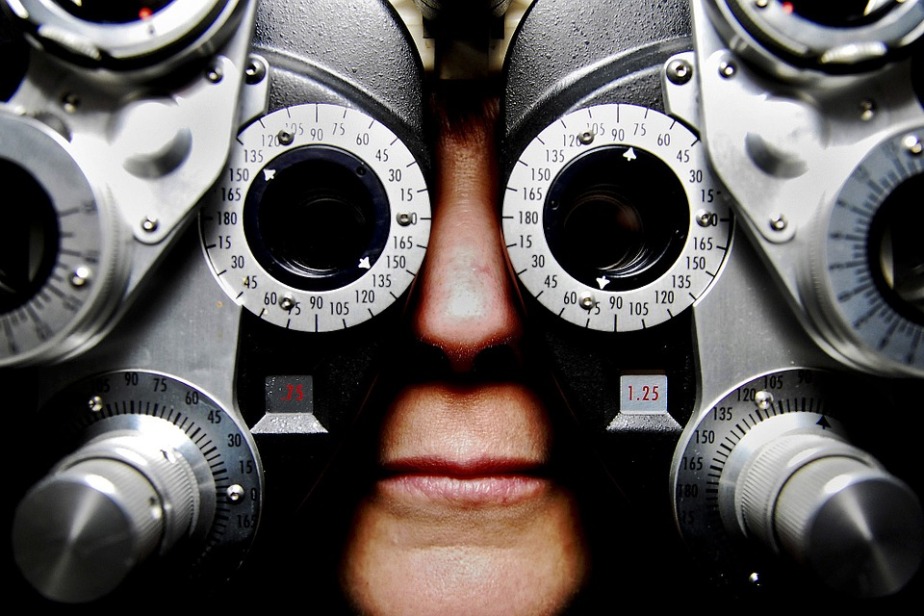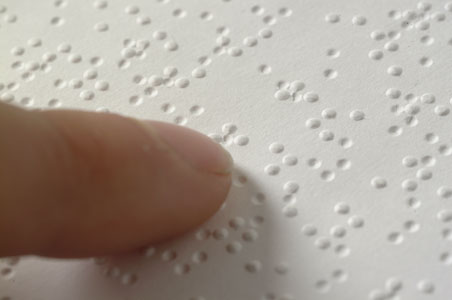
Across the time and space in Western cultures we can understand sight as the primary sense. How does sight, or lack there of, affect individuals and how we navigate and experience the world? The sense of sight holds more weight than its four counterparts of taste, smell, touch, and hearing in that virtually all aspects of life are based around sight.
While it is widely accepted now, Ancient times had a different understanding of what having sight meant and what it meant to live without sight. As Professor Danielle Kinsey of Carleton University explains, there are not too many sources that give insight into what life was like in ancient times if one were blind (Kinsey, 2015). The stereotypes of the blind at this point (Oedipus, the Three Fates etc.) were neither positive nor negative. However, it should be noted that in many tales from the ancient period we find the blind characterized as an individual with extraordinary ability and or powers. For example, Tiresias, a blind clairvoyant is found in a plethora of Greek myths, who is relied upon by Kings and warriors alike in looking to the future for answers (Britannica, 2015). While not segregated form the general populous, the blind were mystifies ad fetishized in the popular culture of Ancient times. We still see this trope in popular culture with characters like Daredevil who, as described in the Internet Movie Database ‘about’ section is described as someone “[blind] with […] other senses superhumanly enhanced, fights crime as a blind lawyer by day, and vigilante by night” (IMDB, 2015).
The Medieval era understood blindness in a different manner than its Ancient predecessor. This is when blindness is first understood as a disability. In many cases blindness was regarded as a reflection of one’s soul- a religious punishment, if you will (Kinsey, 2015). There was a popular notion that if one were not born in God’s image (able bodied) that God must be punishing you for your tarnished soul (Kinsey, 2015). Christianity offered redemption for those who were blind through religious servitude (Kinsey, 2015). In many instances families would disown whoever was blind and leave them to be cared for by the church (Kinsey, 2015). The trope of the ‘blind beggar’ came about at this point as well with a dash of doubt. Should one be a blind beggar, one would need to prove that they were in fact disabled (Kinsey, 2015).

While Western European nations like France, one of many predominantly Christian nation states, had a history of using blindness as punishment in famous battles like the Norman Invasion of England in 1066 (BBC, 2014) it was also one of the most progressive nations in regards to the treatment of the blind. One of the most well known French accomplishments is the development of Braille by Louis Braille in 1824 (NCIB, 2011). Although Braille was considered a revolutionary development it is not widely used. In the United States, for example, less than 10% of the blind population read Braille (Associated Press, 2009). Technology, in many instances, seems to be taking place of systems like Braille in order to accommodate blindness more comfortably in Western society (Associated Press, 2009).
The Enlightenment and the Scientific Revolution drastically changed the politics of the eyes. Empiricism became the new standard of evidence; if you could see it, you could believe it. Prior to the Enlightenment beliefs systems were not fully rooted in the natural world, but following the Enlightenment so called great thinkers like Isaac Newton, Nicholas Copernicus, and Galileo questioned the traditional models of belief, which were generally religiously based at this point, and put their faith in the natural world and the visual evidence that it produced. From this point onwards we have seen an institutionalized trend of empirically based evidence in all aspects of life.
It is easy to criticize Western society’s history of the treatment of the visually impaired, but have we improved our treatment and understanding of what it is to lack sight in 2016? Tropes of the visually impaired remain a prominent fixture in pop culture. As previously mentioned, television shows like Daredevil perpetuate the stereotype of the blind person with extrasensory abilities. Or the archetypal character who wears glasses, such as Velma from Scooby Doo or Steve Urkel from Family Matters, who is often portrayed as nerdy, clumsy, unpopular, and, more often than not, the comic relief for those who are ‘normal’ (without glasses, in this case).
A trailer for the most recent season of the Netflix series Daredevil.
These portrayals of the visually impaired beg the question: why are those without sight seen as lessers in our societies? A 2006 Statistics Canada study revealed that approximately 3.5% of Canadians are visually impaired with almost half of these persons acting as part of the Canadian workforce (StatsCan, 2006). The ability to use one’s eyes should, ideally, not determine their worth socially, but as is evident across history and in present day, sight is worth much more that what one can see before them.
Sources
BBC. (2011, March 10). History: Normans. Retrieved August 5, 2016, from BBC, http://www.bbc.co.uk/history/british/normans/
Editors of Encyclopædia Britannica (2016). Tiresias | Greek mythology. In Encyclopædia Britannica. Retrieved from https://www.britannica.com/topic/Tiresias
Editors of Encyclopædia Britannica (2016). Oedipus | Greek mythology. In Encyclopædia Britannica. Retrieved from https://www.britannica.com/topic/Oedipus-Greek-mythology
IMDB. (2015, April 10). IMDB. Retrieved August 5, 2016, from Daredevil, http://www.imdb.com/title/tt3322312/
Kinsey, Danielle. “Vision.” Lecture, History of the Body, CU Online, Ottawa, 2015.
Roth, G. A., & Fee, E. (2011, March 1).
Retrieved August 3, 2016, from Pixababy, https://pixabay.com/static/uploads/photo/2015/03/18/17/45/eyeglasses-679696_960_720.jpg
Retrieved August 3, 2016, from Wiki, https://upload.wikimedia.org/wikipedia/commons/4/4c/Braille_closeup.jpg
The invention of Braille. Retrieved August 5, 2016, from National Center for Biotechnology Information, http://www.ncbi.nlm.nih.gov/pmc/articles/PMC3036681

One thought on “Eye See What You Mean”